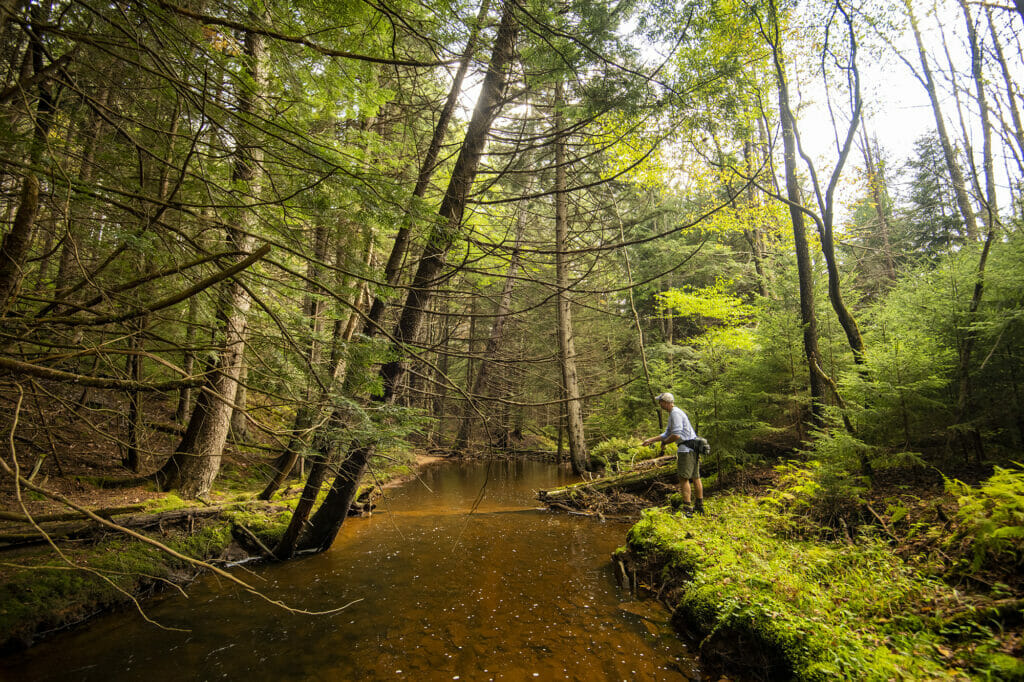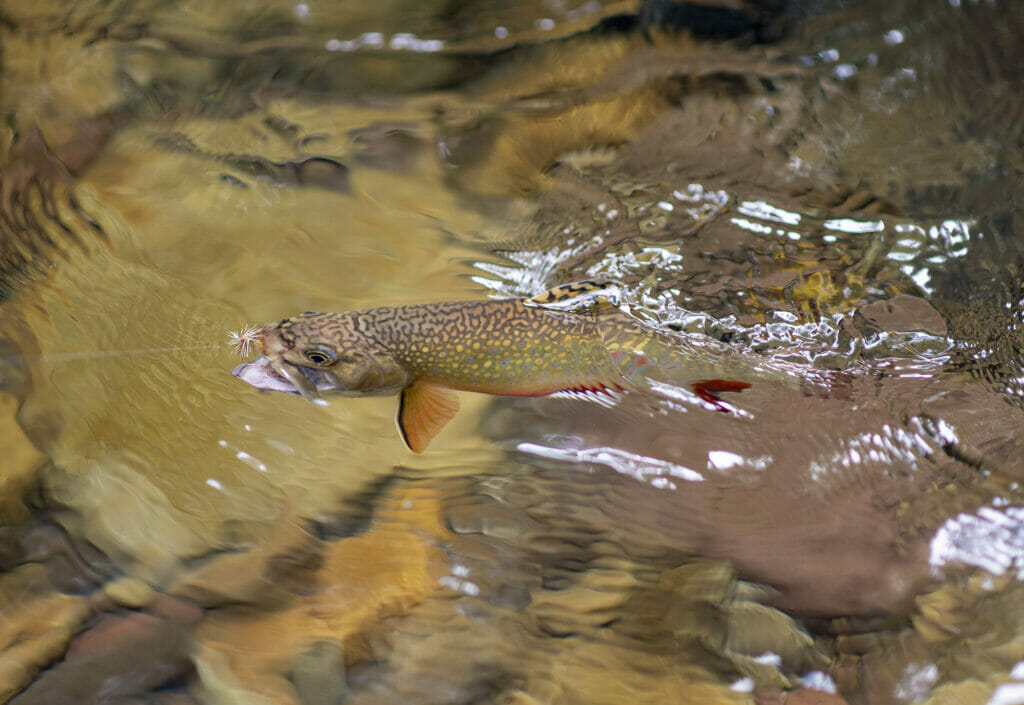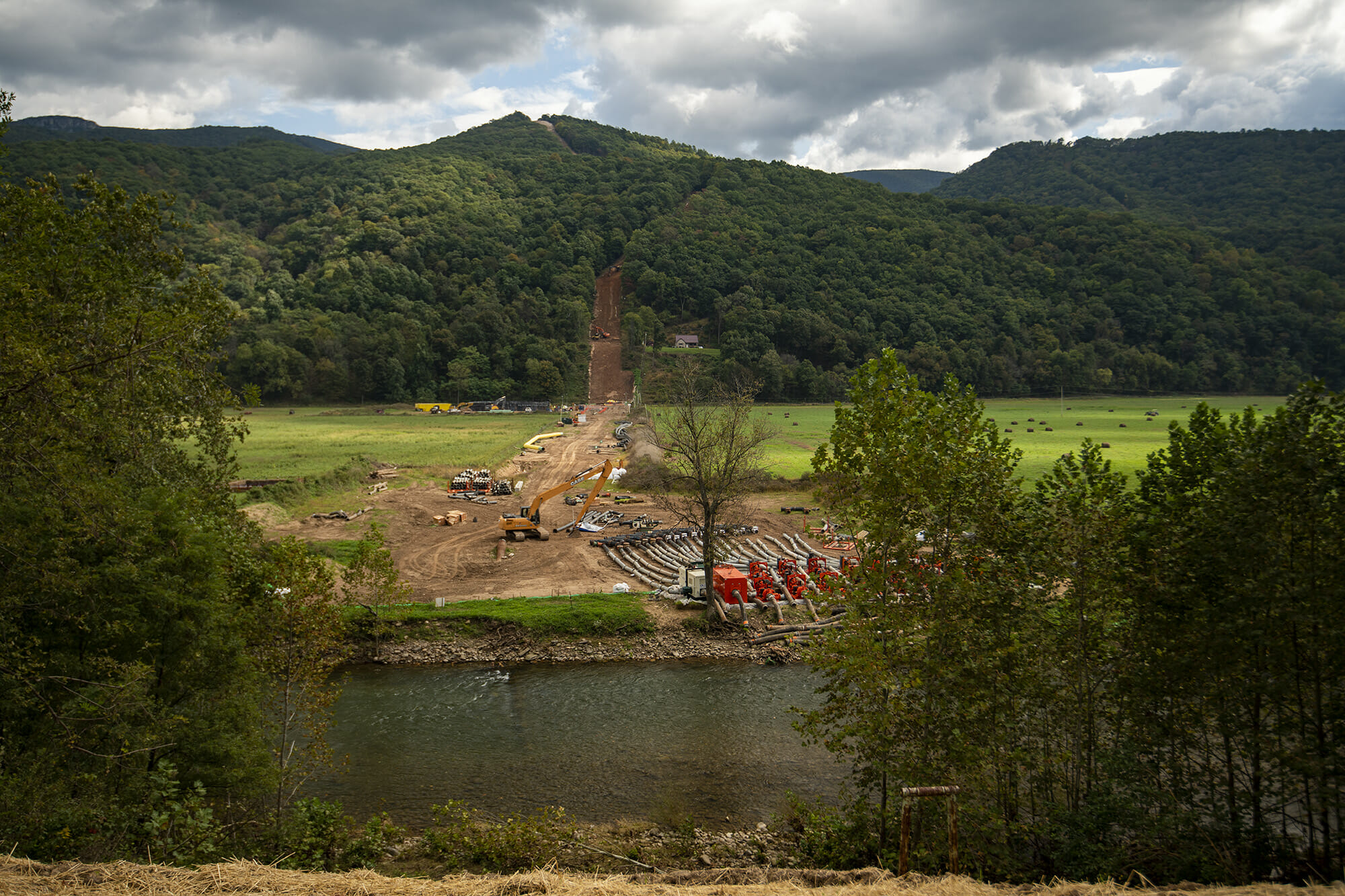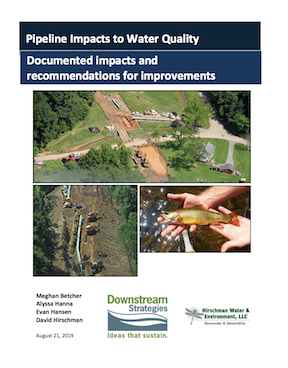Demise of eastern pipeline offers lessons for protecting streams amid energy development
Now that the Atlantic Coast Pipeline has been scrapped, we’re left with an important question:
What lessons can we learn and apply the next time a developer proposes to build a pipeline through trout country?
The developers’ decision to cancel the ACP ends a six-year fight over construction of a 600-mile, $8 billion transmission line across the central Appalachians and into North Carolina. The route would have cut through parts of West Virginia and Virginia where the native Eastern brook trout thrives, including sections of the Monongahela and George Washington and Jefferson national forests.

Many conservation groups and volunteers joined TU in working to highlight the pipeline’s potential impacts on critical natural resources, and we greatly appreciate their efforts.
Avoid, minimize and mitigate
When we weigh in on a project like the Atlantic Coast Pipeline, Trout Unlimited promotes responsible energy development. We advocate for plans that avoid, minimize and mitigate impacts to coldwater resources. We push for sensible siting decisions, careful permit reviews, diligent oversight and sound building practices.
This project stumbled in all those areas. State and federal reviews were inadequate, many permits did not stand up in court and, in the end, the company never provided real assurances that it could protect natural resources during construction.
Lessons Learned
We see four takeaways from this process:
1 Get it right on the drawing board. Route selection is not a simple matter of drawing a line from Point A to Point B. Even after route adjustments, the ACP still would have barreled headlong through areas with steep, rugged terrain and sensitive natural resources. Smarter siting was needed to avoid damage to areas of ecological significance. For the Delaware River Basin states, TU developed a pipeline siting analysis to help industry, agencies, and conservation groups assess whether future proposals would jeopardize important coldwater streams and other natural resources.

2 Plan your work. TU staff and grassroots volunteers collected data about the hundreds of sensitive coldwater streams the pipeline would have crossed, and shared maps with company officials. We also pressed for state and federal regulators to seek more detailed site-specific construction plans for crossing and restoring high-profile wild trout streams. These plans were not produced, which made it difficult to determine how the company would minimize construction impacts.
3 Work your plan. A TU-commissioned survey of recent pipeline projects in the central Appalachians highlighted significant water pollution events, and offered a series of recommendations. The report showed that there is a gap between what companies promise to do to protect natural resources, and what actually happens on the ground. That’s why we advocated for the ACP to employ enhanced best management practices when working around priority wild trout waters. Companies and agencies should internalize the lessons from past mistakes and insist on higher standards of performance in the field, where it counts.
4 Get involved. In the face of data gaps and limited regulatory agency staff, it is often up to volunteers to collect baseline water quality information and keep an eye on construction. With a variety of partners, TU trained several hundred volunteers in West Virginia and Virginia to collect water samples at nearly 100 sites on streams in the path of the proposed pipeline. They were also trained to visually identify signs of erosion and sedimentation, and flagged real-time construction issues on the ACP and other major pipeline under construction in the region.
The bottom line
Proposals like the ACP—or Pebble Mine in Alaska’s Bristol Bay, or energy development in Nevada’s Ruby Mountains—have such enormous implications for our waters and fisheries that there must be a high bar for approval.
Not every project deserves to be permitted. With so much at stake, we have to get it right. TU is committed to working toward that goal.
Keith Curley is TU’s vice president for eastern conservation.
Watch Now: Trout Unlimited works in the headwaters of the Potomac in West Virginia and Virginia.




